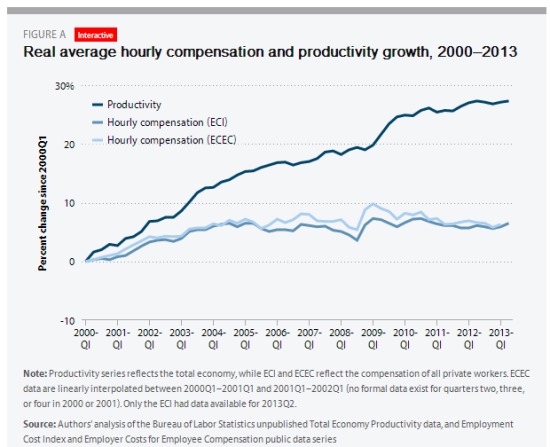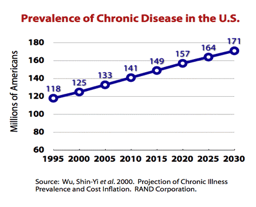Guest post written by: Mike Ritter
______________________
“Allostasis is the process of achieving stability, or homeostasis, through physiological or behavioral change. This can be carried out by means of alteration in hormones, the autonomic nervous system, cytokines, or a number of other systems, and is generally adaptive in the short term. Allostasis is essential in order to maintain internal viability amid changing conditions.” http://en.wikipedia.org/wiki/Allostasis
It’s all about Stress
For all the weightlifters, yogis, crossfitters, endurance aficionados, and sedentary humans, I have news for you: The greatest precursor to heart disease, heart attacks, strokes, depression and cardiovascular related disease isn’t just a bad diet and a lack of exercise; it’s stress. Stress (emotional and psychological) is both your best friend and your greatest enemy. In natural doses, it helps you thrive in adverse situations and defend yourself against harm. Your potential to thrive and grow depends on your ability to manage stress in all of its forms. It’s important to note that stress is not defined as a car payment, your in-laws, sitting in traffic, or the threat of a predator. Those are categorized as stressors. They are external influences that may or may not trigger a stress response. When stressors are present, the way you acknowledge, interpret, and respond is defined as stress. The stress you experience is referred to as an allostatic load.
Allostatic balance is simply the balance you play between the sympathetic and parasympathetic nervous system and the flexibility to bounce between the two. Proper function of the digestive, reproductive, cardiovascular, central and peripheral nervous systems depend on the flexibility and balance of the sympathetic and parasympathetic nervous systems. Your ability to respond in a healthy way to both physical and emotional threats is directly dependent on that balance and your ability to consciously and deliberately fluctuate between the two. Chronic exposure to stress disallows these mechanisms to function properly. No matter your training discipline or belief, we are all attempting to manipulate the same thing: stress. Before we can manage it, we must understand it and the downstream effects it has on our physiology. To understand stress means we must understand the population in the modern American lifestyle. Ultimately, stress is a response. With this understanding of stress, by the end of this narrative you will understand three important truths:
- The balance of your lifestyle, job, food, exercise, personality and relationships all contribute to the same pool of stress; all stressors affect the same systems. (Section 2)
- There are controllable and uncontrollable external stimuli. (Section 3)
- You can choose the dosage of controllable external stimuli to create balance. (Section 4)
Stressors affect us deeply, whether we give consent or not. In today’s world, people are becoming more productive at work, traveling more miles, and piling on more exercise. These modern stressors are received and translated by our limbic system (described in section 2), our most primal of all systems. Stressors affect our autonomic functions and in today’s world people have become more sympathetic dominant than ever before. These very same people are walking through our lives every day asking for answers. They are asking to follow our exercise and dietary protocols to fix these problems. Because so many of them are far removed from a perceivably “normal state of life”, it is increasingly important that we concern ourselves with every individuals state of stress. First we must determine what type of stress responder they are and let that dictate our recommendations. To understand how much of an effect stress has on the outcome of our health development; we must look at ourselves from a completely primal, necessity based level.
Species Thriving:
Punctuated Equilibrium
Humans thrive on volatility. We do not do well with low and slow. We need peaks and valleys in order to grow. Those who seek challenges thrive most; those who fear discomfort will not evolve. This principle is best illustrated through a concept in evolutionary biology called Punctuated Equilibrium.
- Punctuated equilibrium is a theory in evolutionary biology which proposes that most species will exhibit little net evolutionary change for most of their geological history, remaining in an extended state called stasis. Yet, post-cataclysmic event, they will show great adaptions and a regrowth.
Throughout history anthropologists have observed the greatest evolutionary progression (mentally and physiologically) proceeding a major catastrophe; the ice age, asteroid, civil war, 9/11 etc. In our case we see great change, post-cataclysm even in today’s era from a societal standpoint. After 9/11 we saw examples of great patriotism this nation hasn’t seen since the civil rights movement. People, mostly volunteers and firemen, stayed awake to help peel rubble off of encaptured victims for 48 hours at a time. Their act of heroism would never have been witnessed had it not been for the act of terrorism on their homeland. This event triggered a reaction from our government to change the way we secure our skies. In addition, we are constantly being observed with new forms of technology never before seen. Again, a great adaption triggered by a catastrophe. The concept of punctuated equilibrium, physiological, psychological, and social evolution post-catastrophe is not only coded in our history but in our biology.
A vaccine provides a small dose of toxin which forces the immune system to find a solution to the invading enemy. Your immune system essentially gets a weakened dose of a pathogenic threat and your immune system not only fends it off but creates a future defense system for unanticipated encounters with that same pathogen or threat. This concept also applies to how we approach training and exercise. We see it work all the time. Over a shorter time period, that’s essentially what your workouts are intended to do: deplete and tax to create overcompensation. Something that is very important to remember from here on is that training and exercise are intended to create an adaption. In our case we are talking about stimulating growth in wellness and health. Overcompensation in the training world stimulates improvements in athletic performance and health, but for different reasons.
In today’s society most of us train for aesthetics or performance. That’s an industry that’s been created out of the most obese society in history desperate to get out of jail quick. However, if you step back and take a macro view of a species and how they thrive, you’ll see that ALL of us see the greatest health benefits when we train for fitness and fitness at its most human level. Ultimately, this is the mastery of both the sympathetic and parasympathetic nervous systems. These two systems control our most fundamental, primal autonomic functions, and when these systems are in poor balance, we are in poor health. Mastery of these systems means mastery of hormone regulation, metabolism, brain function and subjective benefits like creativity and sense of purpose. We can only obtain mastery of these systems by purposefully taxing them on a regular basis. Because we have not much need for them in the zoo animal society of the western world, they are essentially falling asleep unless you go out of your way to tax them purposefully. A lack of taxation provides no stimulation and no growth. No growth leads to a gradual decay of life functions and an overall lower quality of life.
However, we have a problem. Exercise prescription recommends general work and rest periods meaning workout hard, kick ass in the gym and then rest. This works until the average 2-3 year shelf life of our clientele is up. I’ll explain later why that is an incomplete recommendation and falls short of building a healthy fitness program. If we’re to learn anything from evolutionary biology it would be that the greatest overcompensations only happen through extreme volatility. Through a violent peak and a very quiet calm we know progress.
The modern athlete vs. the modern human
The Modern Day Human: Cheri
Cheri was a success story waiting to happen. Her story began as an overweight 57 year old at 5’4 210lbs working over 80hrs per week in a law firm. After a two year weight-loss journey Cheri’s personal trainer moved away and she began working at the club with a few trainers. Her body fat was below 16% and she could bench press 75lbs which was an all-time personal best. Cheri was happy.
This is where the trouble begins. Fast forward one year later Cheri’s statistics (body fat, bench press), motivation and ultimately her progress was exactly the same. She was working out 6 days a week yet had not shown improvement for the efforts. That’s when I met with Cheri.
Some facts about Cheri:
80 hrs. work week- her job consists with around the clock troubleshooting, planning and management. She is responsible for managing teams, fixing technological issues.
Her sleep patterns are disturbing. 4-5 hrs. at best and most of the time broken into 1-1.5hr blocks
She forgets to eat at work but she drinks a lot of water. – This is not uncommon for many people to simply get too wrapped up in their work that they forget basic necessities.
She is admittedly gets a lot of anxiety from work. She describes herself as an extremely analytical person and has trouble turning off her brain when she’s not at work.
It turns out Cheri had a lot of problems you commonly you see in the modern era. Most of her time, 6-7 days per week, is dedicated to exhausting, muscle depleting, and calorie smashing workouts. People look at Cheri as a model of motivation, and she is determined to make the most out of her life, making her a role model of behavior for a lot of people in her inner circle. Her work ethic is second to none, but Cheri is becoming very frustrated with the lack of progress in comparison to how hard she works. It doesn’t add up. Do you know anyone like this? You probably do. The answer is simple for Cheri but we will get to that in section 4.
The chart below illustrates a study done by the Bureau of Statistics from 2000-2013. It shows that American workers are approximately 28% more productive at work than in 2000 (more hours, higher rate of task completion etc.). What’s very important to note is that it shows only a 7-8% increase in compensation, meaning that we are doing more work for not much more money. Cost of living has risen since then as well.
The next chart shows a very similar rate of increase in chronic disease similar to the rise seen in the productivity study. It’s certainly not because of a lack of activity. In the year 2000 32.8 million people owned a gym membership of some sort and that number has increased to 52.9 million in 2013. Now, roughly 47% or so use their memberships on a regular basis, but still the usage graph shows the same curve. How are we continuously exercising more yet getting sicker? That question can be answered a number of ways but I’m led to believe there is a strong correlation with the amount of stress we put on ourselves plus the attitude that more exercise will make it better. Quality and typing of exercise matters.
More interesting is this statistic: The highest selling category in book retail in 2012 was self-help. This includes exercise, diet, psychology, leadership, etc. The second most? Biographies. Now, I’m only speculating, but if you take in all of this information in one breath it seems to uncovers a very revealing behavior. We are interested in improving ourselves, and we are trying to, but we don’t know how. I think the current high intensity training fad has been shown to work for some; others not. As a health professional I see many people gain health improvements then experience burnout or fall off the wagon. The hyper-intensive, productivity oriented stress levels as a society might very well be the underlying factor.
The Modern Day Athlete
We see so many sick people in the sedentary population of this country. It’s so prevalent that we created an entire fitness industry to help solve it. Sedentary lifestyles provide very little taxation, therefore very little growth. It’s a fairly simple equation. We also have a sick population that’s not being discussed nearly enough. These people, I won’t call them “over-exercisers,” but a more fair title would be “chronic over-compensators”. It’s not uncommon to hear about chronic health issues coming from the arenas of more extreme types of exercise such as CrossFit, distance runners and ultra-long distance endurance sports, and some forms of bodybuilding and powerlifting. The chronic health issues I’m referring to include heart related disease, an array of hormonal imbalances, joint dysfunction and psychological addictions. Before you put down the rest of the article because I said something negative about your favorite way to train let me make a distinction; I’m referring to these individual modals in their sport forms. There are ways to do each one of those modals safely if executed with a health-first approach. Sport, however, isn’t necessarily designed to make you healthy. It is designed to create winners and losers, which is fulfilling in its own way. No one should play the sports of football, boxing, CrossFit or endurance sports under the pretenses that you will come out healthier. Most Ironman athletes can attest to that.
In a sports career, your training days, rest days, food, and sleep are designed to promote peak athletic performance for a time period called a career, and then to hell with whatever happens after that. It’s ok, that’s just what it is. Some people do beat the curve though. The ones who do are referred to as savants and outliers. From the outside looking in, these super humans do anything they want, see great gains, and live forever without any problems. But are they really outliers? Are these people simply aliens who are different than us “normal” folk? Perhaps they just manage some things under the hood better than the rest of us. Perhaps they manage this allostatic balance better than their competitors. But how? Does athletic performance necessarily mean you’ve achieved mastery of allostasis? I will say no.
The most common reasoning as to why these savants thrive in their own unique way is that their choice of sport was right in line with their physiological and intellectual makeup i.e. Michael Phelps. He also had a personality which was attracted to the water and the voluminous training necessary to compete at a world class level. Had Michael Phelps chosen powerlifting, would he still be able to compete at a high level? The obvious answer is probably not. He was built to swim and he was fortunate enough to have someone in his corner tell him to do so. Hence, he became Michael Freaking Phelps. But, the story of Michael Phelps teaches us a very valuable lesson. He also reportedly ate a diet of 12,000 calories a day during his training season full of foods sky high up on the inflammatory foods lists. If the report was correct, from a dietary standpoint the food quality of his diet was horrific to say the least. Yet, he won a gold medal and set multiple world records. In fact, he became the winningest medalist of all time in the Olympic Games. His training volume was clearly at a level that someone with a working occupation couldn’t uphold in their 40’s. That can’t be ignored. Does athletic performance translate into health? It’s possible but only if other factors such as stress are managed appropriately. If not, you could essentially become a winner in sport and lose your health at the same time.
Maybe, just maybe, our personalities and stress management capabilities internally are indicators of what type of training we should participate in, in order to thrive.
We can navigate our health plans more effectively by becoming more aware of a few important factors:
- State of stress: Stressors + stress response
- The amount of time spent in natural/artificial environments
- Personality and individual stress response
Yes, and I’ll explain why. Stay tuned for part 2.





“You could essentially become a winner in sport and lose your health at the same time.
By his own admission, Mark Sisson is the poster boy for that line.
Looking forward to the rest of this series. Very important stuff, which many folks tend to think doesn’t apply to them. It’s very hard to convince some people that they actually need to exercise *less!* (Or, if not, then exercise *differently.*)
A great way to look at allostasis is to look at the three forms of stressors that can contribute to our allostatic load and move us away from homeostasis:
Chemical – How we eat, drink and the chemicals in our air, food water, cosmetics etc
Mental – How we think and feel,
Physical – Structural alignment, injury, under-moving, over-moving etc.
Looking forward to part 2, Mike!
Thanks alot guys! This project is very important to me. Hope you enjoy the rest.